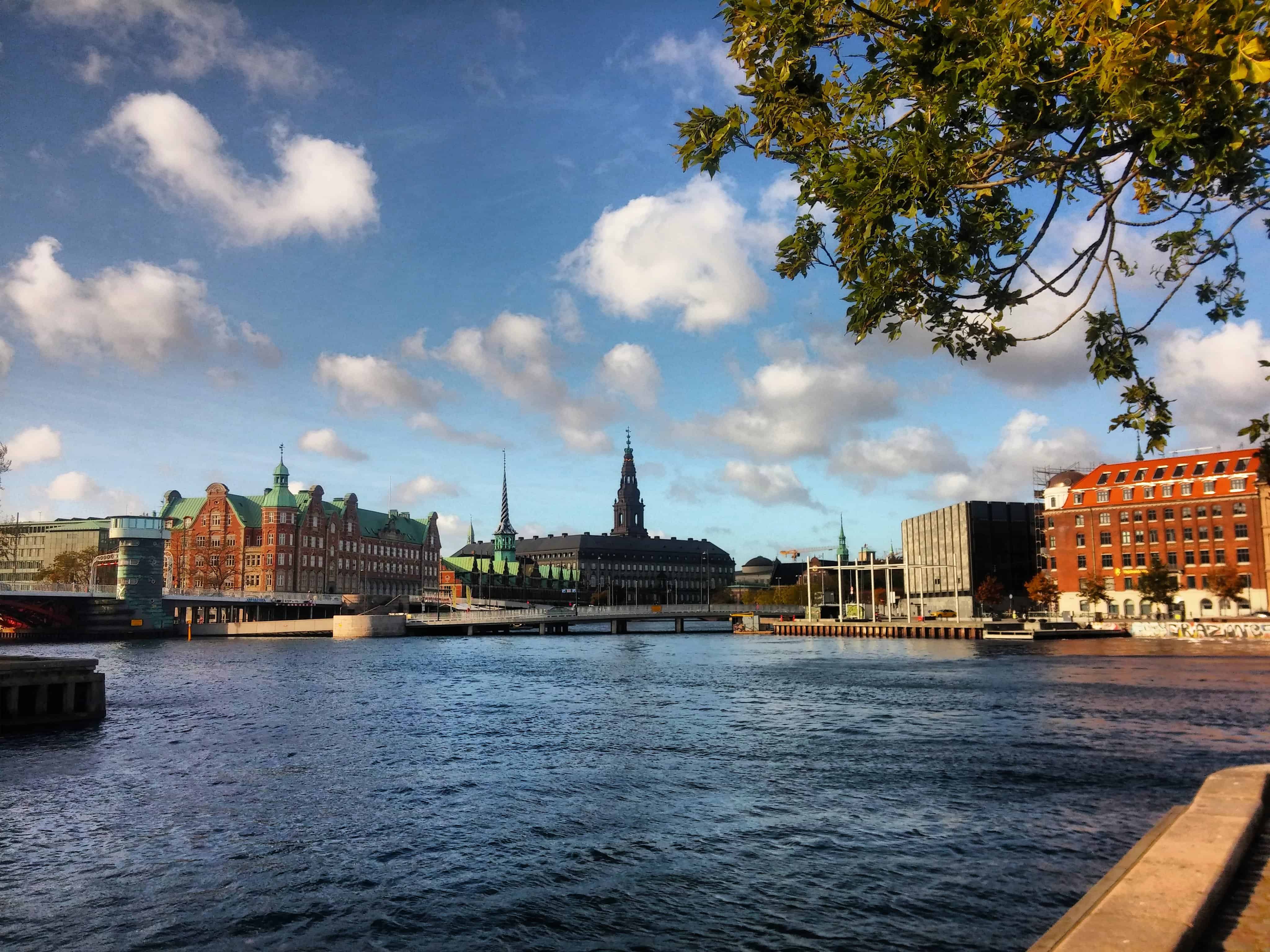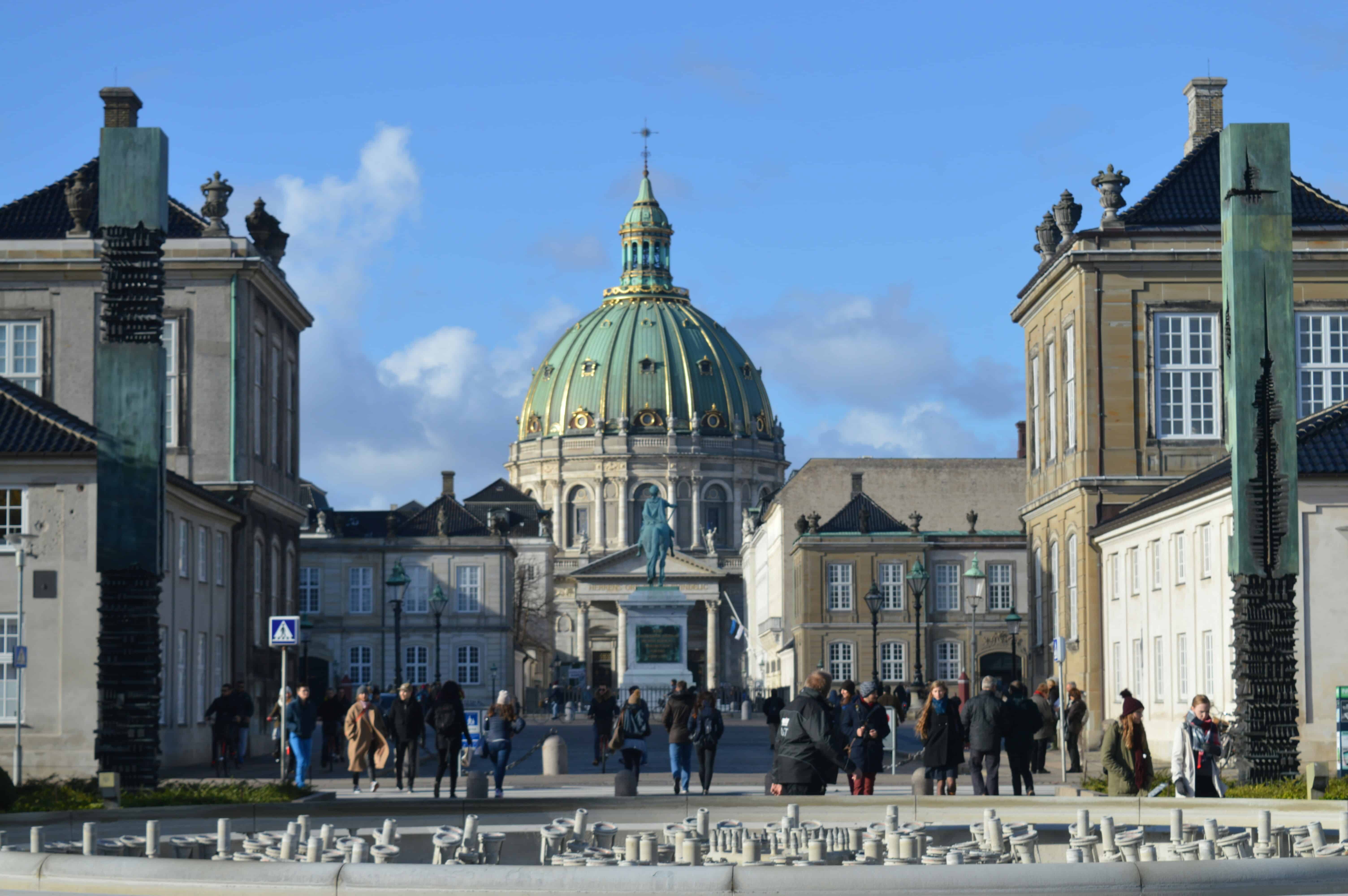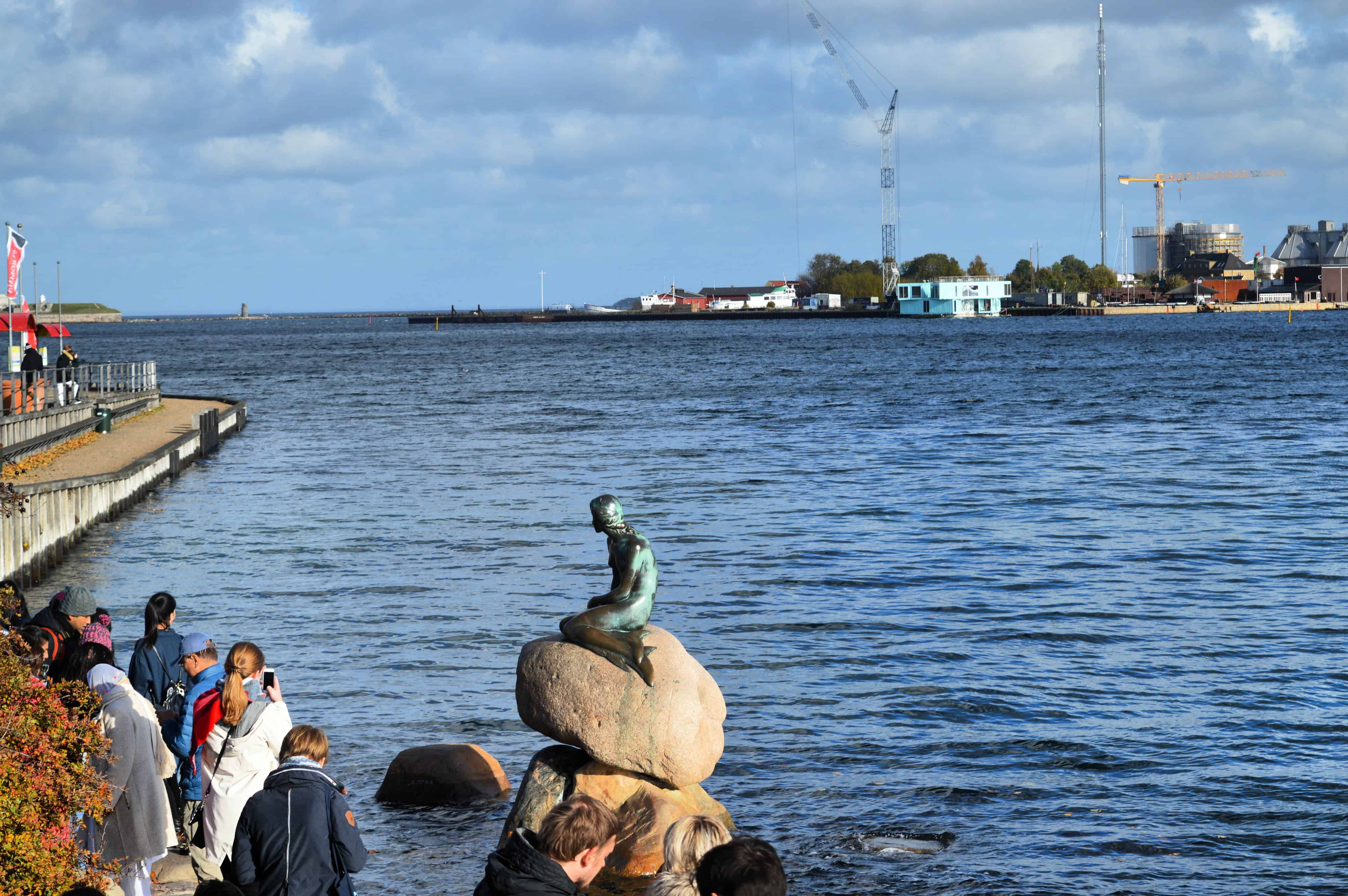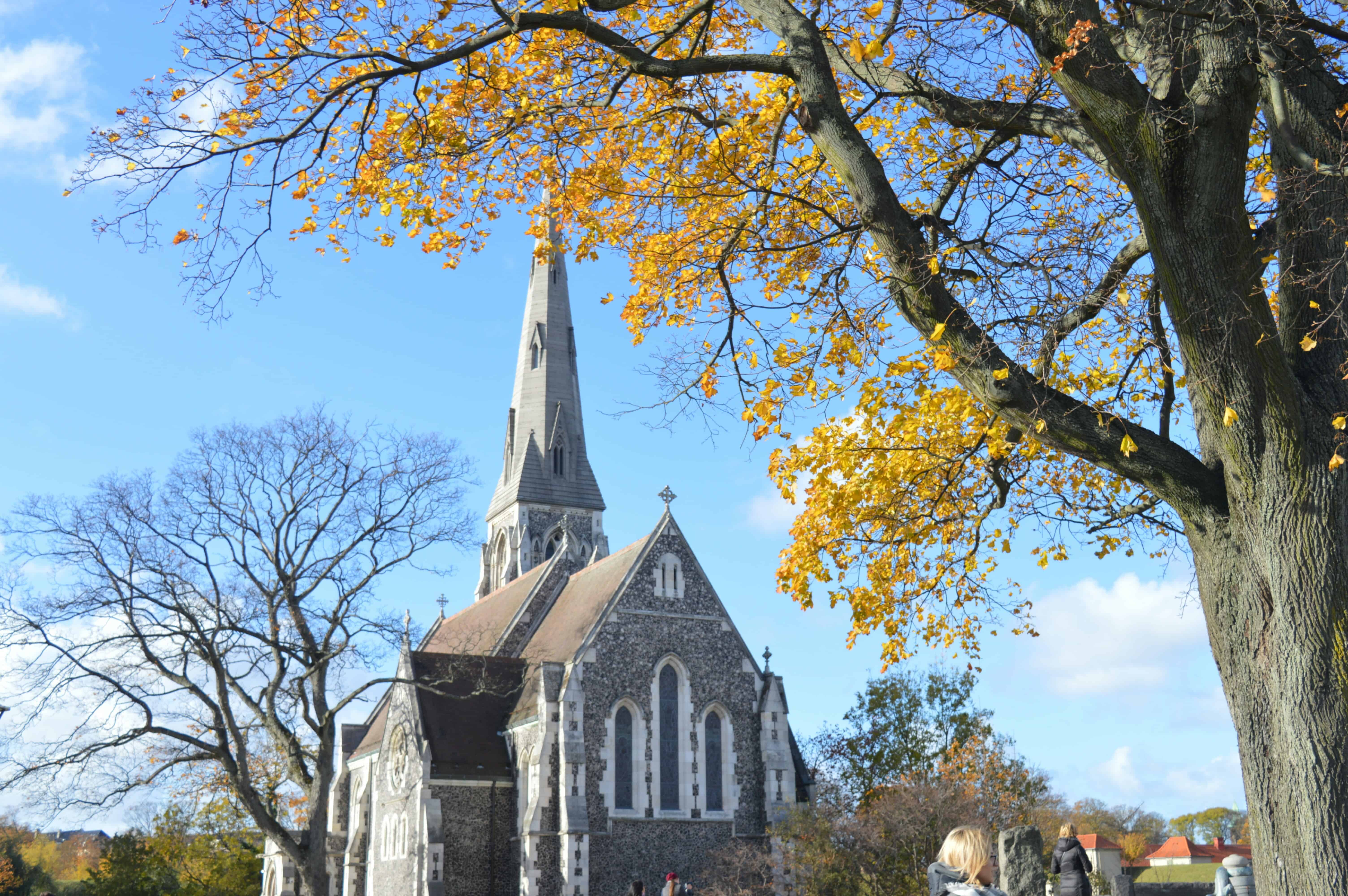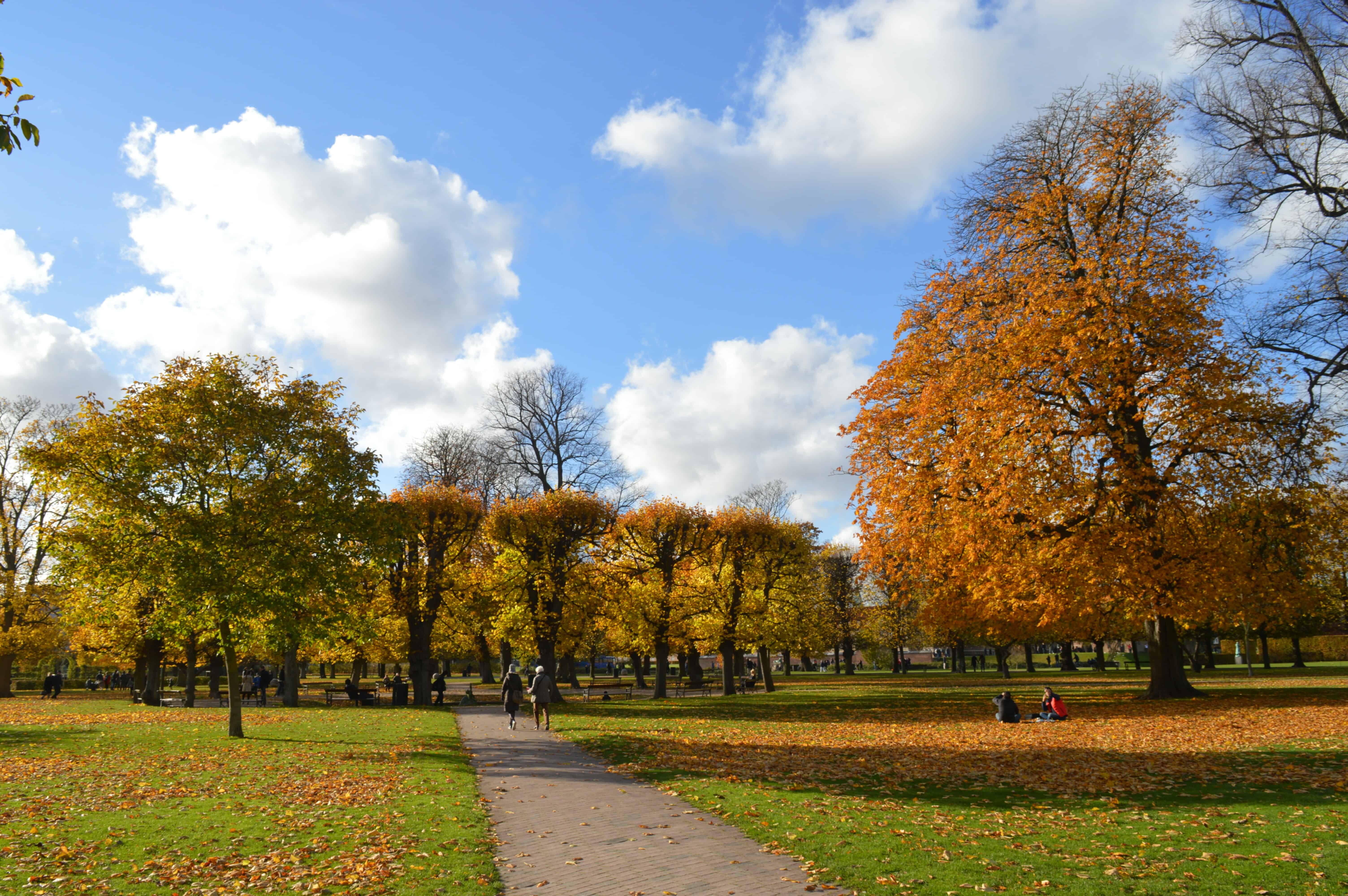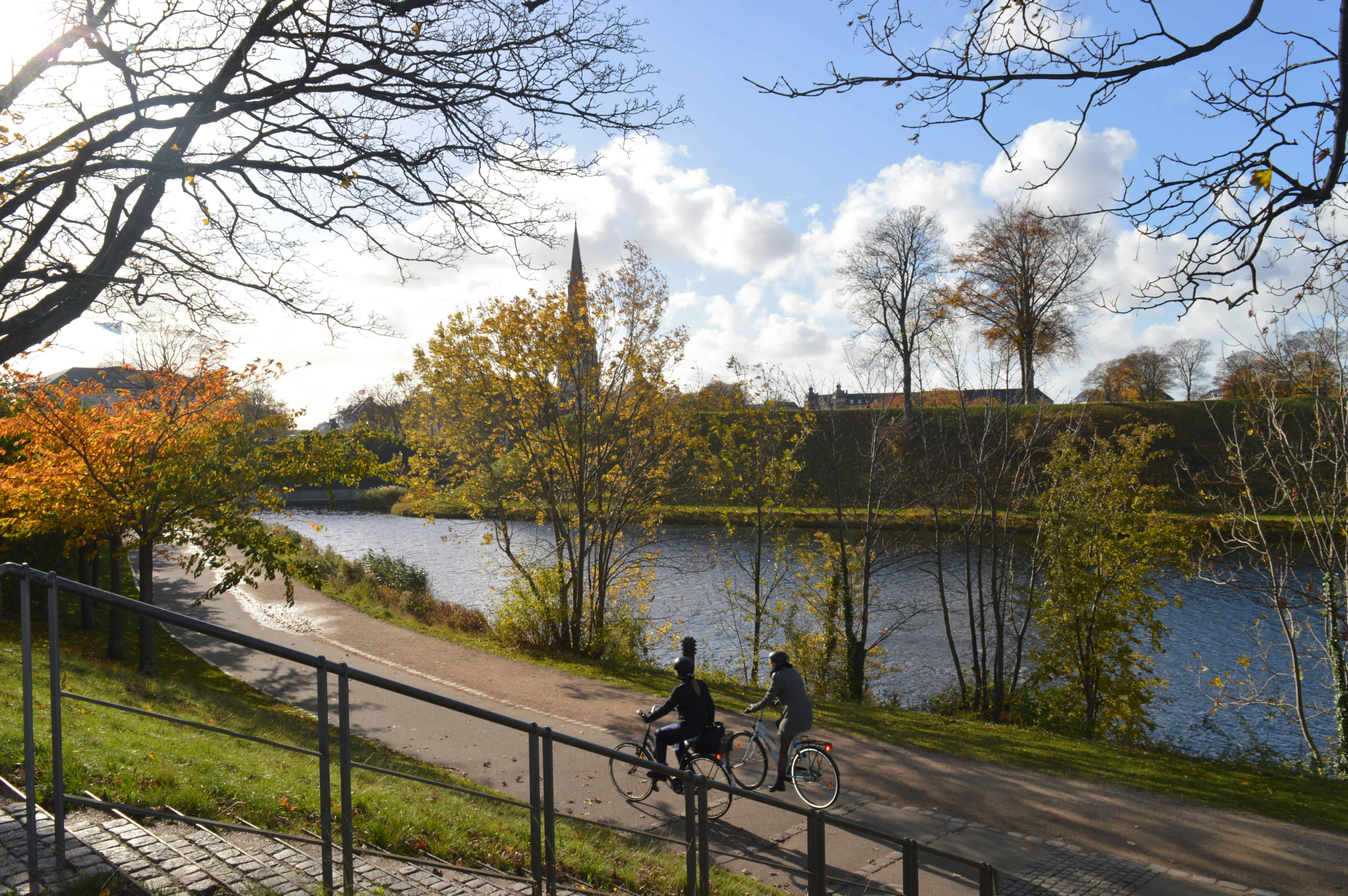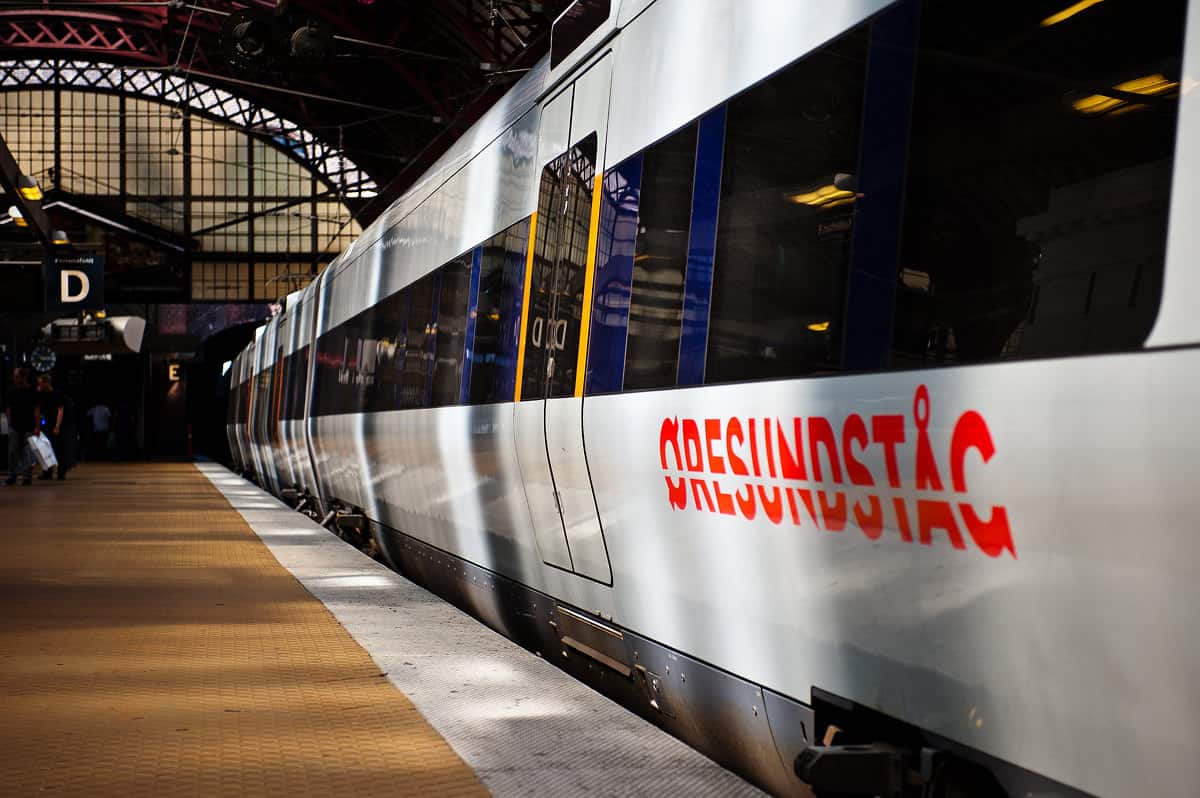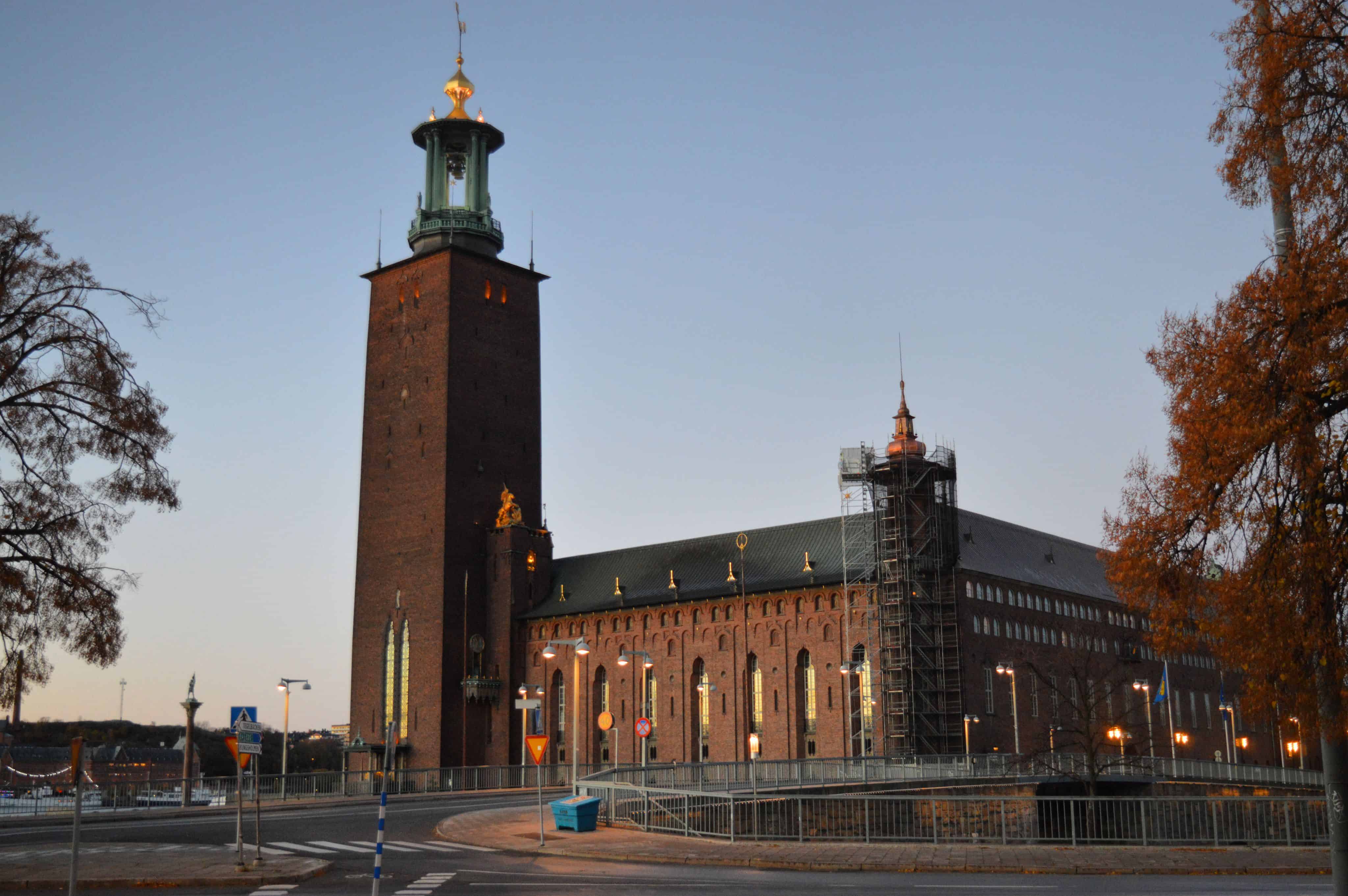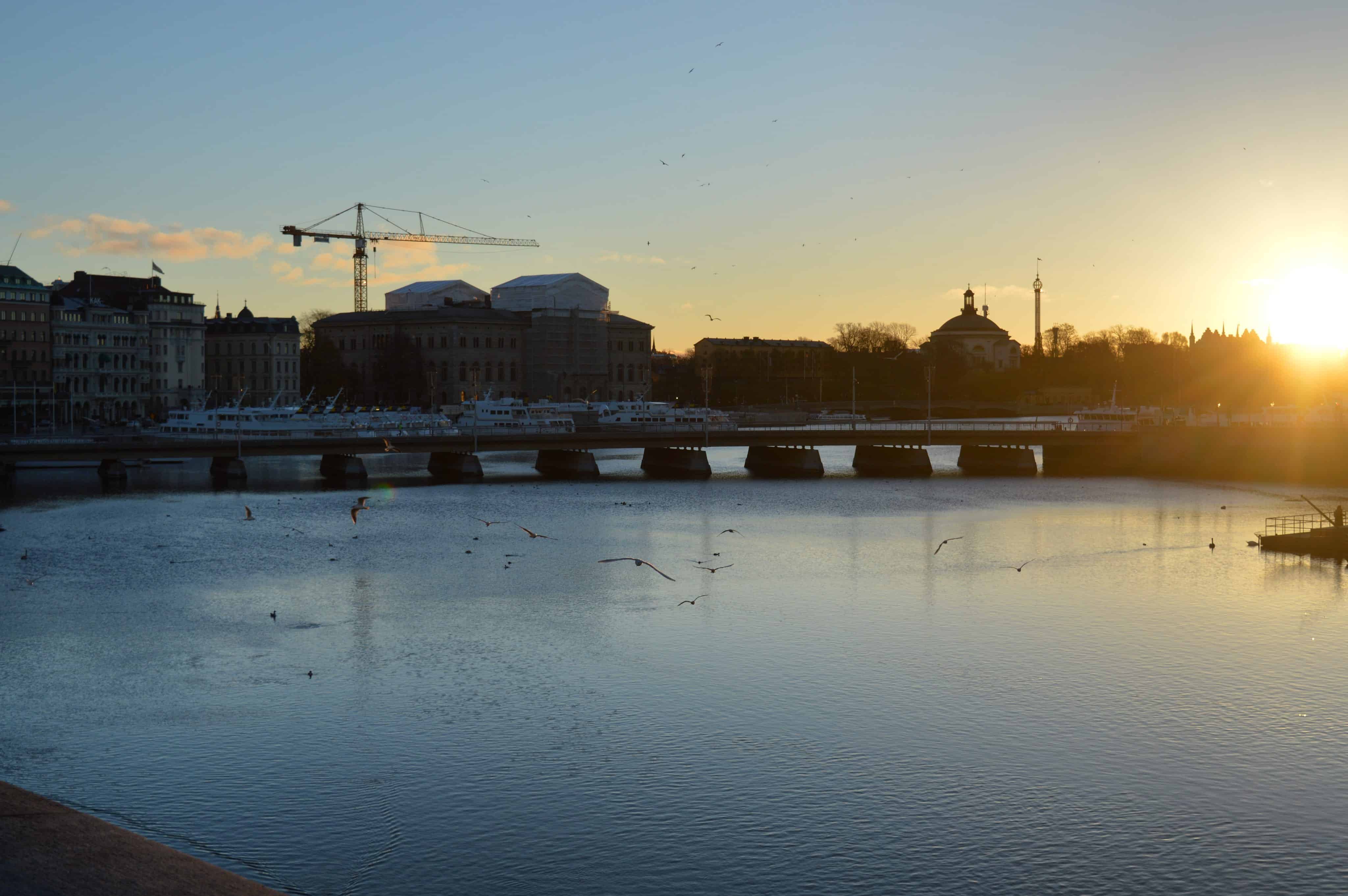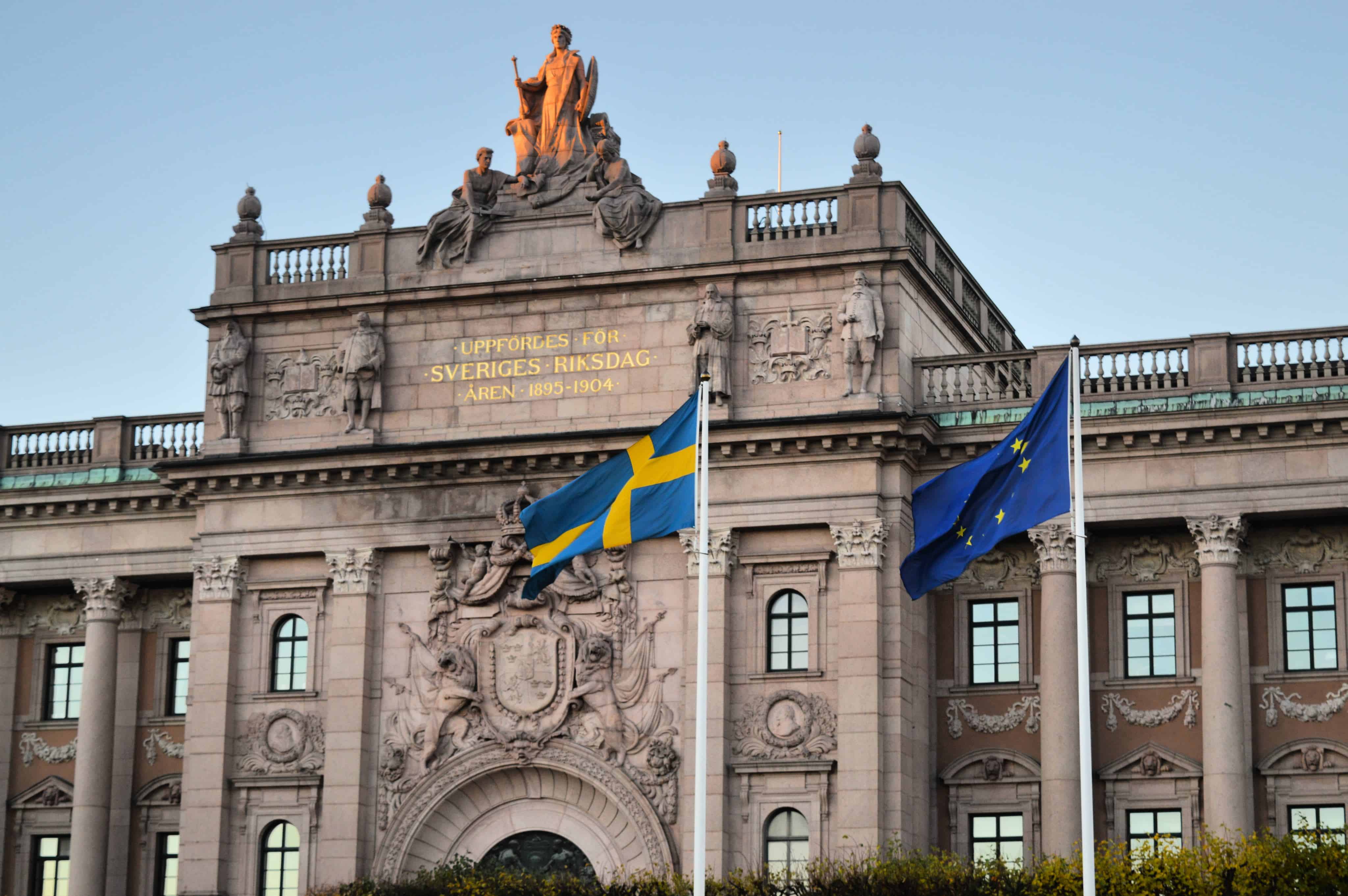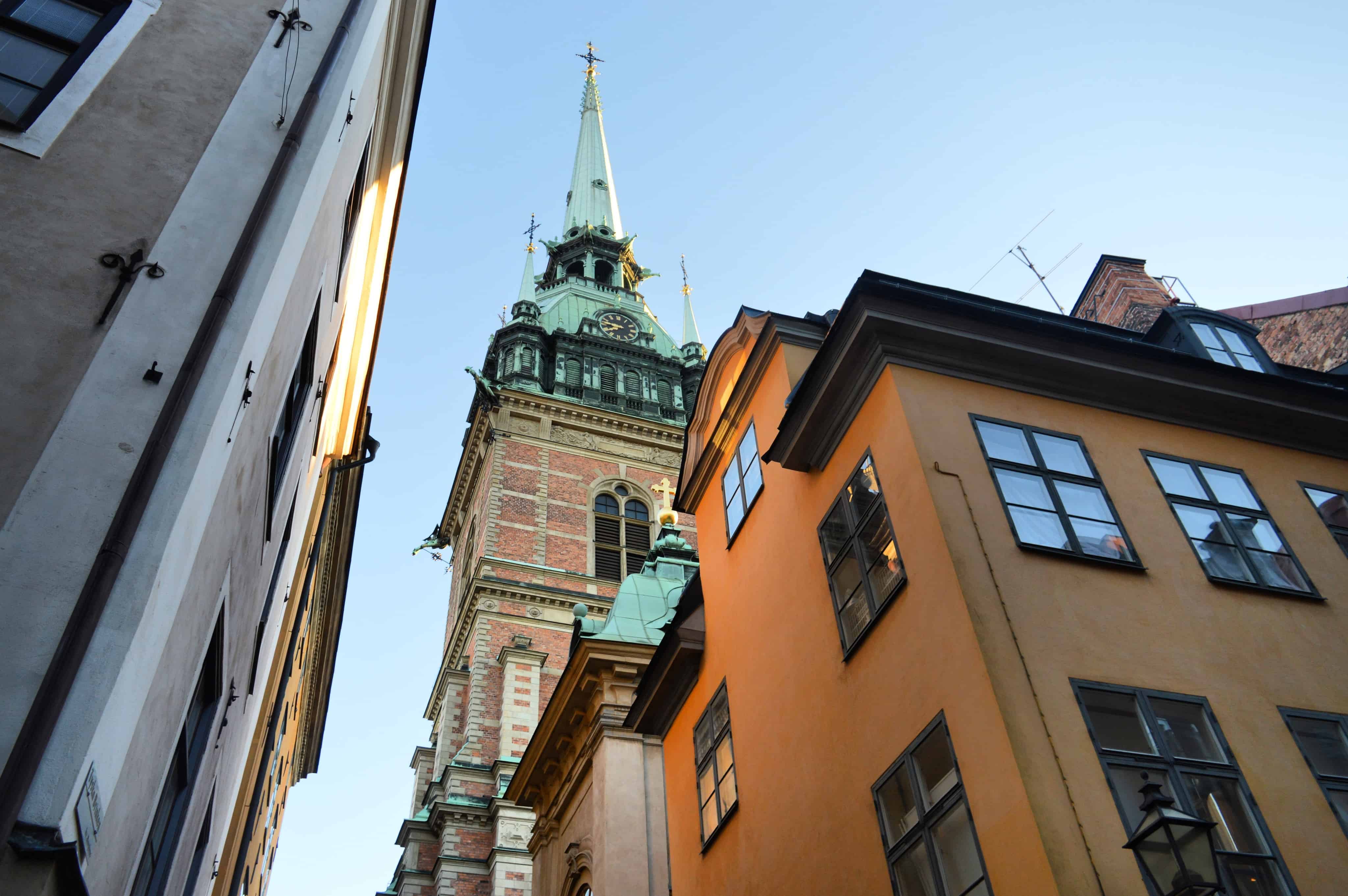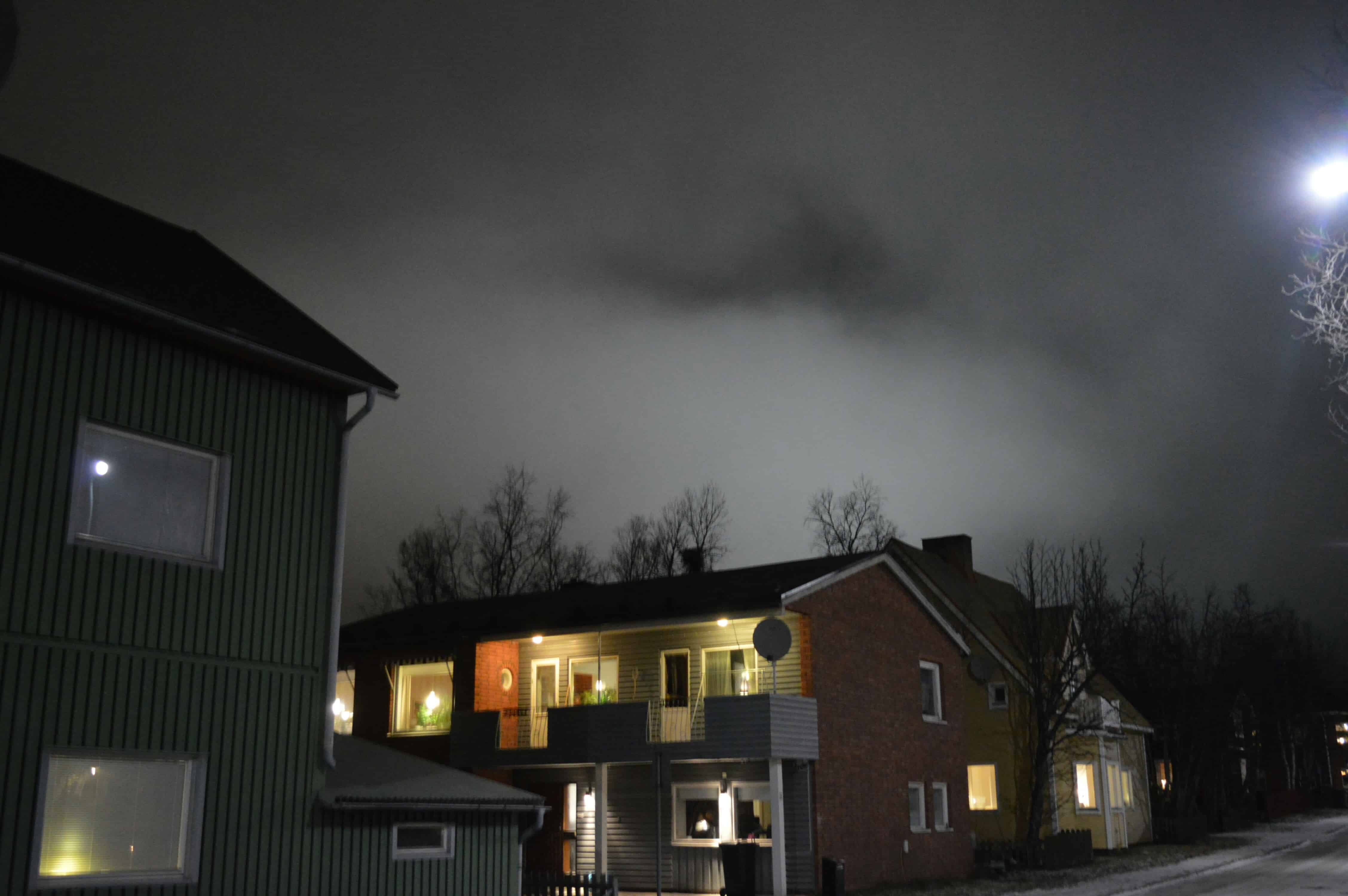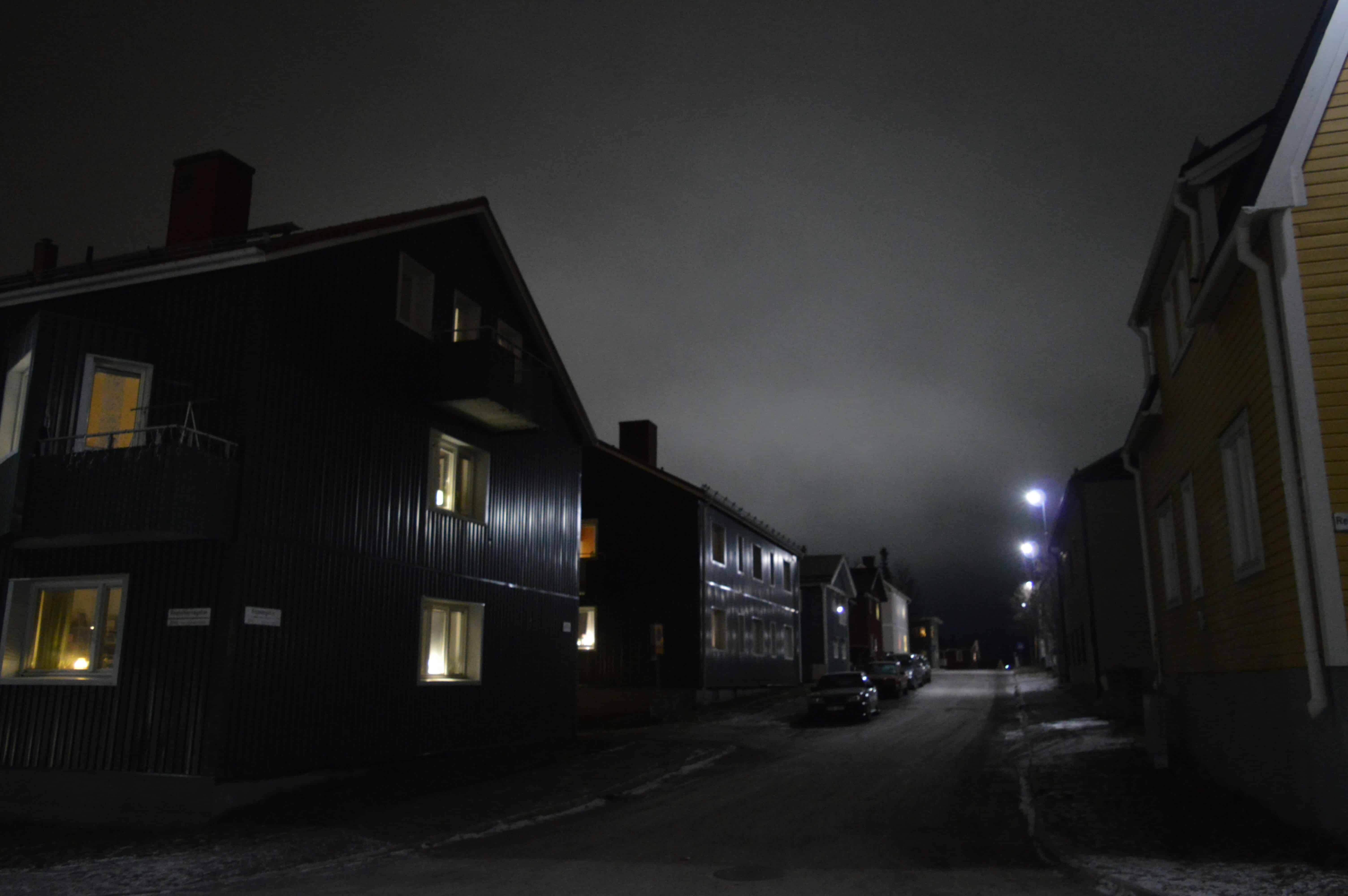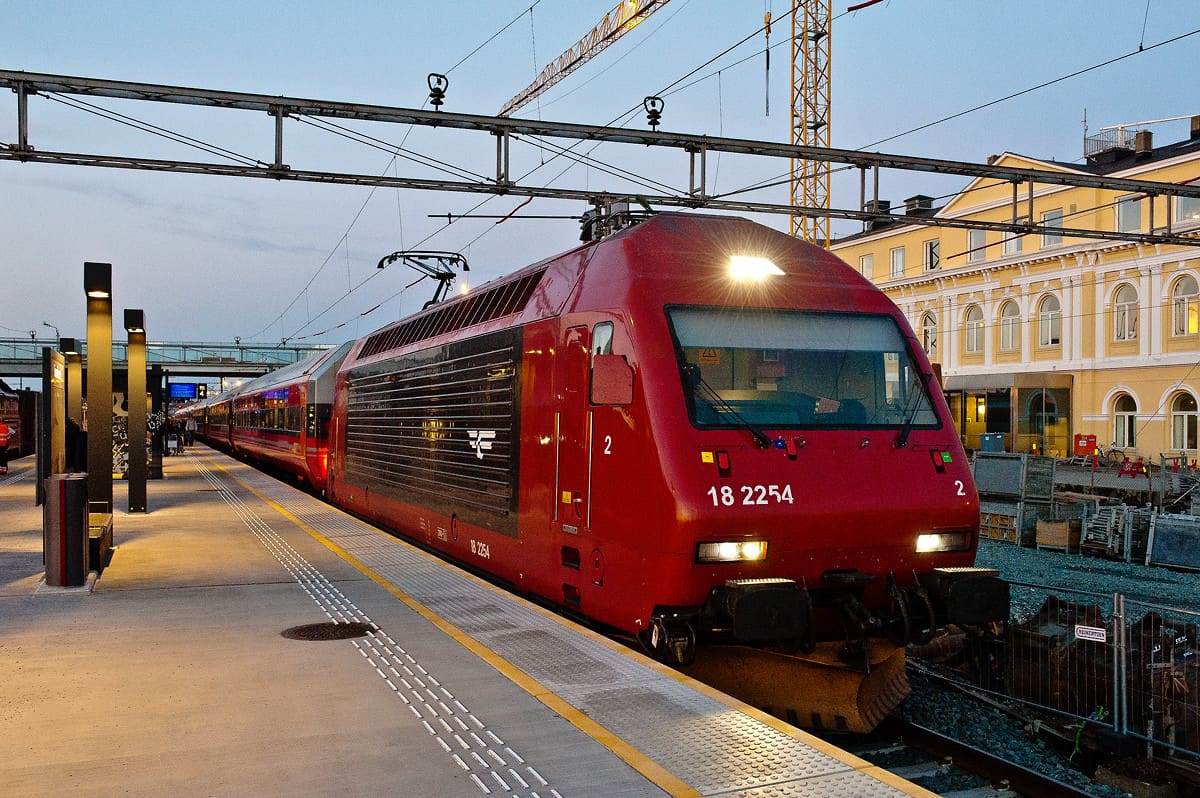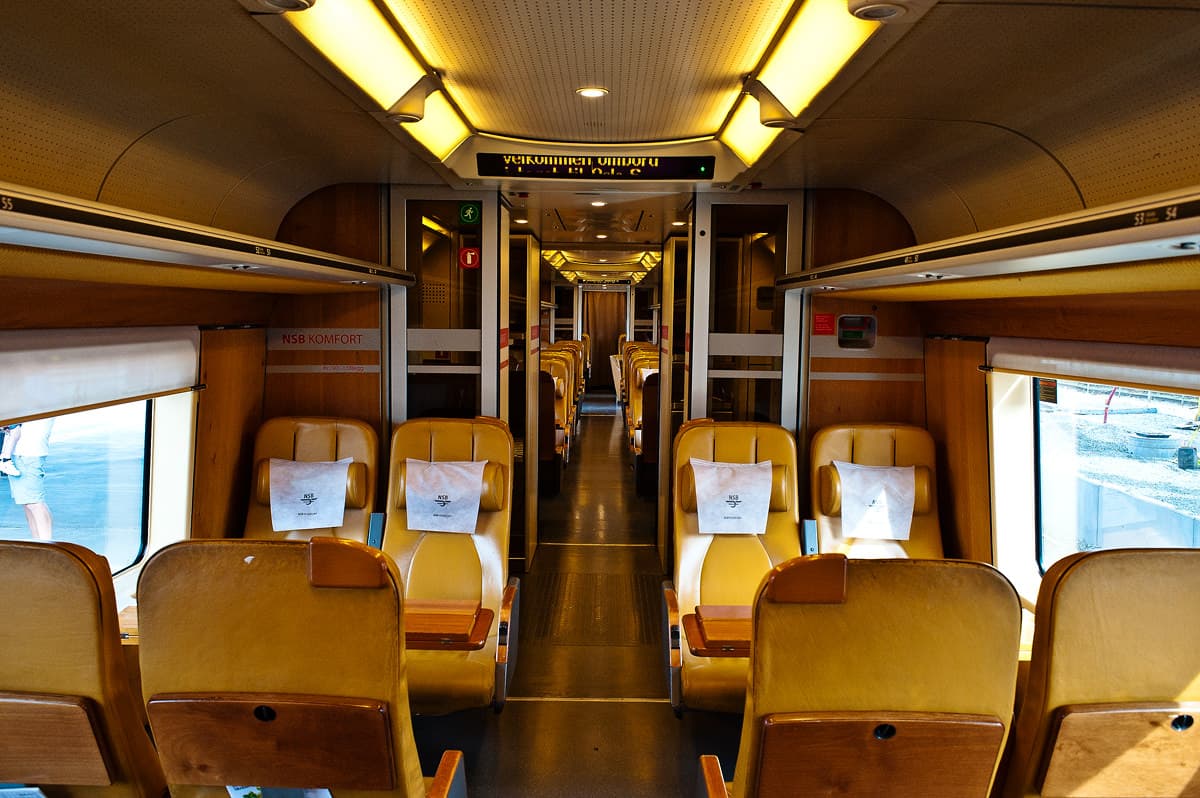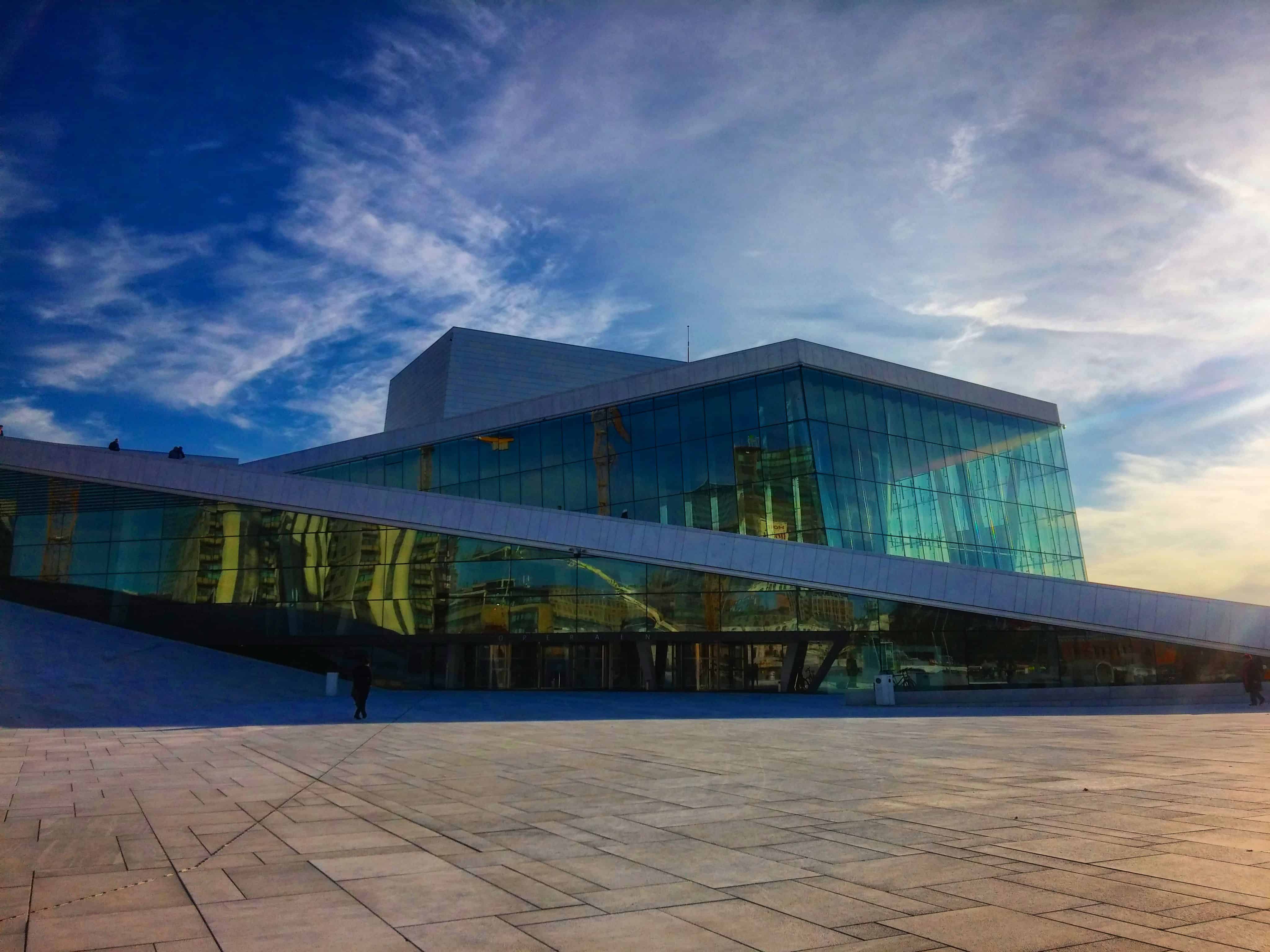Follow me as I travel to Scandinavia by train. The land where an inexorable dark descends in a winter welkin lit up by the Northern Lights.
When I think about train travel there are way too many things that come to mind. Train travel actually captures the charm of another era and functions as a reminiscent admonishing us to slow down, appreciate the journey as much as we can and make the most out of it. When you are on a train the only thing that you actually have to do is just unwind and relish the countryside passing by your window. Because trains in fact literally transform the transportation process from something frustrating and baffling to an unparalleled experience. On top of that, there is food and wine too, which of course you can have on an airplane but, seriously, plane food? Much obliged.
Besides, many trains across Europe boast great dinning cars with superb food options. Imagine that: having dinner in Paris, sleeping in your private compartment or your couchette and waking up surrounded by palm trees on the glistening Cote d'Azur or another European city.
But ultimately, the most precious element of train travel is the people you meet onboard. It is the best place to connect with your co-travelers and hook up both with people you will never meet again or even with people that you are actually going to see again sometime in the -foreseeable, hopefully- future. And who knows? You might even end up continuing your Interrail trip along with the fellow travellers you've met on the way.

As a South European, I've always considered the countries of Northern Europe as something peculiar and entirely different from what I've been used to. So, when I finally got my hands on my Interrail Pass I just couldn't wait for the day of my departure. The days did finally elapse and the next thing I knew was that I was on a plane to Copenhagen on my first solo-trip ever.
From Athens I flew to the alluring capital of Denmark, Copenhagen. From there I continued by train to Stockholm where I took the night train to the Arctic Circle, had an overnight stay in snowy Kiruna and then crossed the border to Narvik, Norway. Fauske follows suit and then Trondheim using a night train as well. My final stop was the Norwegian capital, Oslo with which I completed my Scandinavian Interrail trip.
Copenhagen
After a three hour flight, I finally arrived at Kastrup airport. It is not the biggest in the world but it definitely is one of the most modern ones. From the airport there are train connections to Sweden and the city centre. The train station is located by Terminal 3 and the trains to the city centre run every 10 minutes approximately. It takes only 13 minutes, more or less, to reach Copenhagen Central Station and you also have the option to choose the metro or a bus (Bus 5A). After purchasing my ticket from one of the vending machines, I headed to the metro station where I got onboard one of the trains. What striked me was that the metro trains were driverless. This means that there is no driver included but everything runs automatically, instead. Sooner than I expected I arrived at the heart of the city. Originally a Viking fishing village founded in the 10th century, Denmark's capital has long been synonymous with design, sustainability and innovation. Home to world-class museums and hallucinatory streetscapes, its bike and pedestrian-friendly streets are a brew of kaleidoscopic houses and vibrant shops.
My first stop in Copenhagen was a little island known as Christianshavn which lies to the south-east of Indre By on the other side of the harbour. Christiania is a self-proclaimed autonomous region since 1971. Major source of conflict and controversy since its creation it is mainly known for its beautiful canals and its ramparts. Be sure to drop a visit at The Church of our Savior (Vor Frelsers Kirke) if you want a breathtaking view of the whole city from up there. Ever since its spire was inaugurated in 1752, it has been a popular kind of entertainment to climb the 400 steps to the top. Unfortunately, the day I arrived the top was closed to public due to strong winds.
From there, I walked to the historic center of the city (Indre By) which boasts many of Copenhagen's best monuments and attractions. One of them is the Christiansborg Palace which is home to the three supreme powers of Denmark. Located on the small island of Slotsholmenm and in a stunning neoclassical and baroque style, Christiansborg Palace is definitely a must-see. Parts of the palace are used by the Royal Family for various events. All rooms can be accessed upon purchase of a ticket.

Amalienborg and Rosenborg Palaces shouldn't miss from your bucket list respectively. Amalienborg is considered one of the greatest works of Danish Rococco architecture and was constructed in the 1700s. It is made up of four identical buildings and it is mainly known for its Royal Guard, called Den Kongelige Livgarde. You can experience the changing of the Royal Guard every day at 12:00.
Rosenborg Castle was built by one of the most famous Scandinavian kings, Christian IV, in the early 17th century. Among the main attractions is the Knights Hall with the coronation thrones and three life-size silver lions standing guard. Rosenborg also houses an exquisite collection of Flora Danica and one of the world's finest Venetian glass collections.

If you come across a district with brightly coloured 17th and 18th century townhouses and cafes, then definitely this is Nyhavn. Nyhavn is arguably one of the most beautiful and picturesque areas of Copenhagen. It was originally a busy commercial port where ships from all over the world would dock. The area was jammed with sailors, pubs and alehouses. Today the dazzling old houses have been renovated and posh restaurants overshadow the port. Many tourists flock here to take selfies or just admire the stunning view.
My last stop in Copenhagen was the beautiful Kastellet. Oh, what can I say about this hidden gem? One of the best-preserved star fortresses in Northern Europe, it is constructed in the form of a pentagram with bastions at its corners. I was left speechless by the stunning scenery inside, the ample green spaces, the rivers and the golden autumn leaves falling from all those trees. The area was full of people, both Danish and tourists, who were enjoying the sunny day either by just having a picnic or just cycling by the lake, under the late-autumn golden trees that covered every route.
Of course, near the northern part of Kastellet, located on a rock by the waterside at the Langelinie promenade, you can find the Statue of the Little Mermaid (Den lille Havfrue). Based on the fairytale by Hans Christian Andersen the small and humble statue is a Copenhagen icon and has been a major tourist attraction since its creation.
In the evening, I took the night train from Copenhagen Central Station to Stockholm. Following the Swedish Government's regulation (SFS 2015:1074) on special identity controls relating to a serious threat to public order and national security, applicable as of 4 January 2016, SJ (Swedish Railways) conducts ID controls at the borders with Denmark. This rule applies to every passenger traveling from Copenhagen to Denmark, so be sure that you have all travel documents required
The SJ night train is one of Europe's most modern ones, with characteristically Scandinavian comfortable cars. All the SJ night trains have excellent facilities. The exquisite food, and wine, is specially selected according to the seasons. There's also a wide range of sleeping facilities offered to choose from, from 6-bed couchette cabins to a 1st class private compartment with a private WC and a shower. You also have an on-board cinema with 21 seats, showing two films per night until 11 pm. There's a bistro in the next carriage as well. Having had a pleasant night's sleep, I woke up in another Swedish city ready to be discovered, namely Stockholm.
Stockholm
In essence, Stockholm is the city where modernity meets tranquillity. Spread across 14 islands by the Stockholm archipelago and the Baltic Sea and connected by 57 bridges at least, it's one of the greenest and fastest growing cities in Europe. Home of the Nobel Prize and the first European Green Capital in 2010 it's not difficult to understand why it is considered the heart of innovation and productivity. There's an unbelievable mix of art, culture and design. This city definitely has it all. People are really friendly and everyone is extremely fluent in English, so probably you won't have any issues with communication.
I arrived in Stockholm really early in the morning and I was freezing, so I waited a bit inside the Central Station until the first morning rays appeared. Then I started walking towards Gamla Stan. Stockholm's Old City, the Gamla Stan, is its most touristic area. And the most picturesque one if you like medieval streets. It's the place with the most tourist sites in the city, including the Royal Palace and the Nobel Museum. Many of the pedestrian streets are full of shops selling various touristic items such as souvenirs.
As I was walking and wandering in the streets of Stockholm I started realising that all of them were empty. I mean, it was eight or nine o' clock in the morning and nobody could be seen, every little shop or cafeteria was closed and nothing seemed working whatsoever. It was the first time I was seeing something like that, you see, in Greece normally everything starts working at eight o'clock in the morning. Anyway, I think this was quite good for me as a traveller, you know, avoiding all those huge crowds of people, tourists etc. but on the other hand I temporarily had the impression that something was missing. Luckily, the streets started flooding with people by ten o'clock and my view of Stockholm was restored.
Arctic Circle
Okay guys, put on your warmest clothes now cause we're heading to the North, really North. After my day trip in Stockholm -and just a tiny delay of 5 hours- I got onboard the Arctic Circle train to Kiruna. The train seemed rather modern, cozy and had quite comfortable seats, even for those in 2nd class. Be it for the warmth created by the heating and my exhaustion, I soon drifted off only to wake up at 6:00 in the morning by an announcement made by the stuff regarding the distribution of free food and coffee to every passenger at the train bistro. As an avid fan of food, myself, I couldn't help but succumb to the temptation. I soon ended up watching the sunrise from the restaurant windows, having grabbed a hot cup of tea along with some other goodies.
The purely majestic scenery of Swedish Lapland begun to unfold just in front of my eyes. Fields slightly covered by snow, frozen lakes, snowy forests extending as far as the horizon and the faint morning light caressing the unspoiled earth. As soon as the sun was up, the landscapes begun to appear clearer. Soon I had my first ever encounter with a white deer and right after that with a herd of reindeers running by the rails.

Time passed by and soon I arrived in Kiruna, the northernmost Swedish town. I stepped out of the train and crossed the covered by thick snow platform, heading to my hostel where I would stay overnight. It was 3.00 P.M and it was already night. The cold was penetrating every pore of my body but still, walking through a town entirely covered by snow was something fun and new to me. After some time, I arrived at my hostel where I left my backpack. I grabbed my camera and headed to a local restaurant for dinner. The dinner was quite good but the prices in Scandinavia are another story.
As soon as I started walking back to my hostel, I looked at the sky and saw what I was there for. The sky was faintly lit up, white and green colors started to appear gradually but I couldn't see them clearly, as the weather was cloudy. At least I almost got to see the Northern Lights on my first -and only- night in the Arctic Circle. That's something, I guess.
The next morning I had to catch the train to Norway, but before that, I firstly dropped a visit to Kiruna Kyrka. It's one of Sweden's largest buildings and it's built in a Gothic revival style and you have access to the fantastic interior inside.
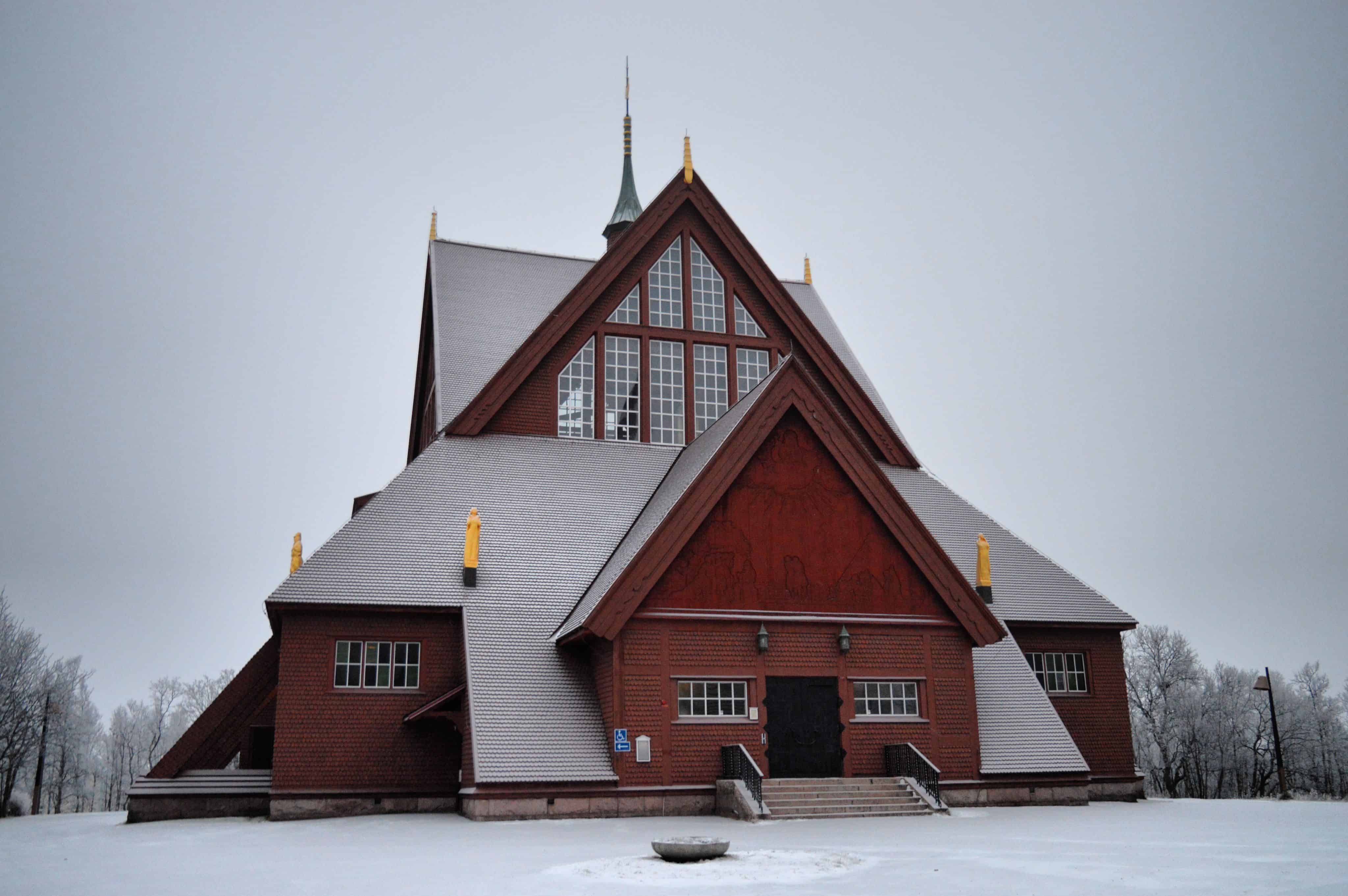
Narvik
After my short visit in Kiruna Kyrka, I took the early-morning train to Narvik, Norway. The landscape was completely covered by snow once again, though the only difference was that now it was more mountainous and steep. The train took just 2-3 hours approximately and we arrived in Narvik with no problem.
Narvik was a really nice city but didn't have anything really interesting in particular except for the World War Museum and the Narvikfjellet, a cable car service, that is. I wanted to visit the latter one but when I got there they were closed and I think there were some maintenance works going on. From Narvik there's no train connection to the South, so if you want to travel to the southern part of Norway you'll have to take the bus all the way down to Fauske or Bodö. The bus line is 720 and there are two daily departures from Narvik. Ticket fare is approximately 450 NOK. The buses are rather comfortable and modern and the trip takes approximately 5 hours with a bus change in Bognes.Finally, we arrived at Fauske train station where you can get the train to Trondheim.
The NSB train seemed quite modern as well. The services provided on board are of high quality as expected. There is a big restaurant wagon and the compartments were all really warm despite the outdoor temperature. There were even blankets available on every seat to accommodate the needs of every passenger.
Trondheim
The next morning, we arrived in Trondheim. I was planning to stay there only until midday so I rushed out of the train, grabbed a coffee and headed to the city center. Having served as the capital of Norway during the Viking Age until 1217 and currently being the 3rd largest city of Norway, Trondheim is such a vivid city. Boasting a huge student population and with its colourful houses, the little boats come and go and the exquisite restaurants and cafes, it's just irresistible! Be sure to drop a visit to Nidaros Cathedral, the northernmost medieval cathedral in the world. It was used as the traditional location for the consecration of the King of Norway. It was built from 1070 to 1300, and designated as the cathedral for the Diocese of Nidaros in 1152. Walking through the graveyard of the Cathedral -though macabre- proved to be quite pleasant especially with all those autumn leaves falling from the gigantic trees overhead.
If you are in Trondheim, you can't miss the signature wooden wharfs along the river Nidelven in the Old Town. The oldest wharfs in Trondheim were built around 1700 on both sides of the river Nidelven and the best-preserved wharfs currently are the ones on the Bakklandet side, between the Old Town Bridge (Gamle Bybro) and Bakke Bridge (Bakke bro), which were really close to the Nidaros Cathedral.
Needless to say, don't forget to visit Kristiansten Fortress on top of the hill if you want a really good view of the town or just to relax by the nature. There were many people on top of the hill taking a morning stroll or jogging.
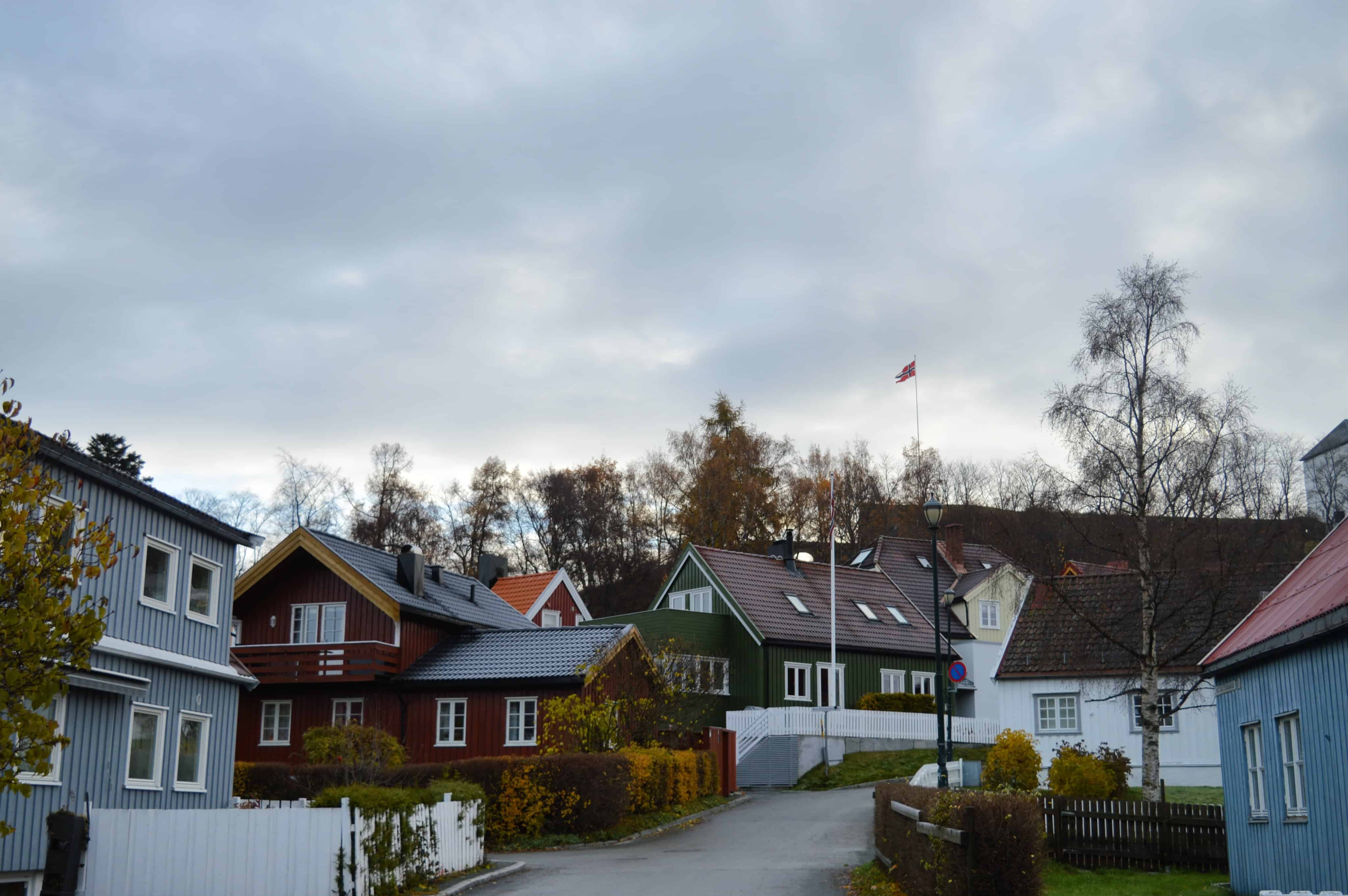
Fortunately enough, I managed to be at Trondheim Central Station on time. The train bound for Oslo was about to depart in 20 minutes so I took my time and started searching for my platform. I had booked an NSB Komfort seat this time as the trip would take a bit longer. NSB Komfort is a separate section of the train where everything is designed for a relaxing and productive journey. There is Internet onboard, of course, just as in every NSB train, but the seats are a bit more comfortable. On top of that, supplementary tea and coffee are available for free.
I found my seat quite quickly and shortly after that the train departed for Oslo. The wagon was so clean, quiet and only the train could be heard rattling as it crossed the frosty Norwegian countryside. I soon found myself at the train bistro, tasting a Norwegian plate of meatballs in gravy with mushy peas and potatoes. Again, the prices in Scandinavia are something out of this world. So if you are on a budget, be sure to buy supplies before you get onboard from a super market, for instance. There you can find cheaper stuff. Despite the price, the food was excellent. Finally, remember that the price tags are different if you have your meal at the restaurant or if you take it away. Normally the latter option is slightly cheaper.
The punctuality of the NSB trains is arguably excellent. We even managed to arrive a few minutes earlier than expected despite the acute weather. I called it a day and had a good night's sleep. The next morning I woke up refreshed and ready to explore the Norwegian capital.
Oslo
My last city was Oslo. It's one of Europe's fastest-growing cities. With an increasing number of new neighbourhoods with eye-catching architecture, Oslo is rapidly transforming into a cosmopolitan hub. At the same time, though, it still maintains a relaxed atmosphere.
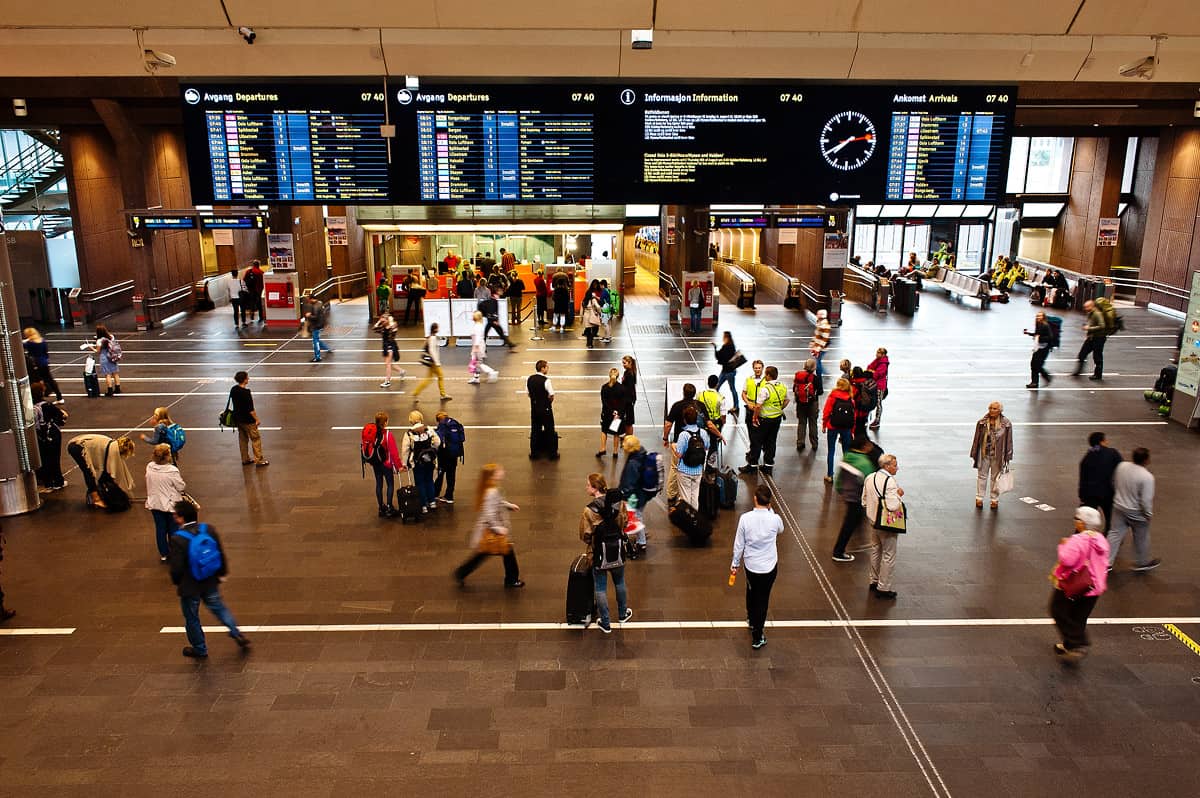
It was a sunny Thursday evening. The atmoshpere seemed so mild so a little stroll around the city was more than pleasant. Its compact size makes it so easy to navigate throughout the city even on foot. The streets were full of people, shops and restaurants. Depsite its size it never feels like you're actually moving far away between its neighbourhoods.
If you are visiting Oslo, then you have to see their Opera House. It is the home of the Norwegian National Opera and Ballet, and the national opera theatre of Norway. The building is situated in the Björvika neighborhood of central Oslo and contains 1,100 rooms. Its angled exterior surfaces are covered with marble and granite making it appear to rise from the water. Its architecture is simply charming and meticulous and guess what? You are allowed - encouraged, actually- to walk on its roof. From the top you get a nice glimpse of the city itself. Notably one of the most interesting things you can see a sculpture named "She lies" and it's located just next to the Opera, rising from the sea surface.
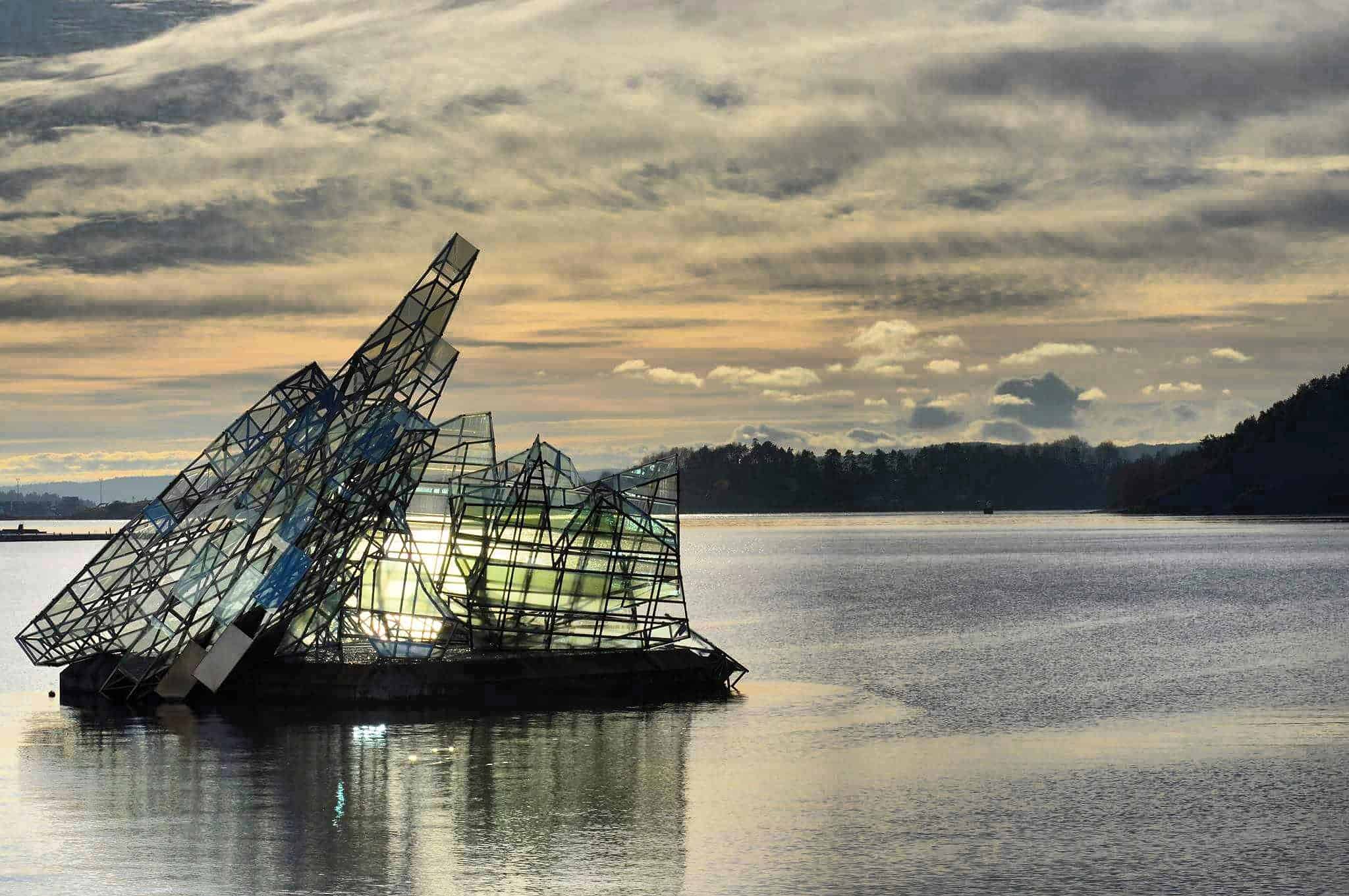
Designed by Monica Bonvicini and made of stainless steel and glass panels, it is a permanent installation, floating on the water. The sculpture turns on its axis in line with the waves, lighting and weather, offering varying experiences through its transparent surfaces.
You shouldn't miss the Royal Palace either. Built in the first half of the 19th century, it is the official residence of the present Norwegian monarch and it has 173 rooms in total. If you have time be sure to wander around the Palace's Gardens.
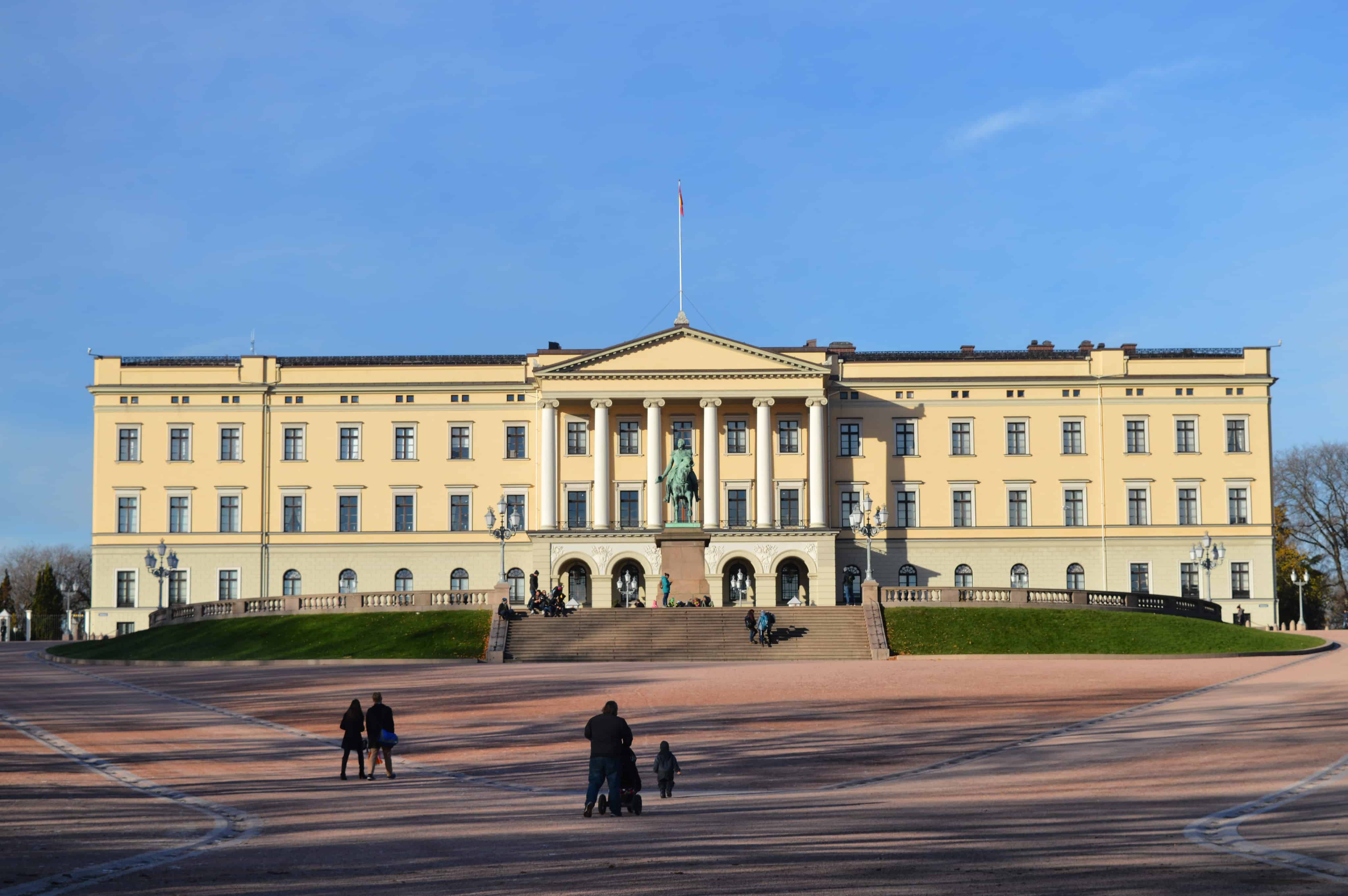
Last but not least is the Oslo Viking Ship museum ( Vikingskipshuset) which is really worth the visit. Located at the Bygdoy peninsula with Viking ship discoveries from Viking tombs around the Oslo Fjord.The museum displays the world's two best-preserved wooden Viking ships built in the 9th century.
Next day I went back to Stockholm to take the plane for Athens. Please note that if you want to travel from Stockholm to Arlanda Airport you can take the Arlanda Express train which is included in your Interrail Pass. The trip takes only 20 minutes!
As the plane bound for Athens departed with its engines in full thrust, steadily gaining altitude and leaving all those experiences behind, I made a promise; to cherish every single moment, every person I've met on my way. The memories that I have collected will definitely accompany me forever. After all, To move, to breathe, to fly, to float; to gain all while you give, to roam the roads of lands remote, to travel is to live. Hans Christian Andersen
All about tickets:
If point to point tickets is your thing, then here you go (prices per person):
Night train from Koebenhavn H to Stockholm C:
Book on Omio or SJ.
Seat: Starting from 469 SEK (50 EUR approximately).
Berth in couchette/ Sleeping car: Starting from 726 SEK (75 EUR approximately) refundable.
Night train from Stockholm C to Kiruna C:
Book on ACPRail or SJ.
Seat: Starting from 501 SEK (51 EUR approximately).
Berth in couchette/Sleeping car: Starting from 597 SEK (61 EUR).
From Kiruna to Narvik:
Book on ACPRail or SJ.
Starting from 167 SEK (17 EUR).
From Narvik to Fauske train station (bus line 720):
459 NOK (50 EUR).
Night train from Fauske to Trondheim S:
Book on ACPRail or NSB.
Lowest price: 549 NOK (60 EUR).
Standard price: 1052 NOK (115 EUR).
From Trondheim S to Oslo S:
Book on ACPRail or NSB.
Lowest price: 449 NOK (50 EUR).
Standard price: 937 NOK (103 EUR).
If you have an Interrail or Eurail Pass then you have to make reservations in certain trains.
Interrail pass available here. Most reservations here.
Night train from Koebenhavn H to Stockholm C:
Reservation fees:
Seat: 3 euros
6-bed couchette: 20 euros p.p.
3-bed sleeper: 40 euros p.p.
Single sleeper (with shower): 75 euros
Fauske-Trondheim:
Seats: 1st class free, 2nd class: 6 EUR
Shared compartment: 115 EUR
NSB Sleeper: 115 EUR
Trondheim-Oslo:
Standard: EUR 6
Komfort: EUR 12
I hope that now you've got an impression of how it's like travelling by train in Scandinavia. For any further questions, please feel free to either message me or visit our super-friendly forum. Please note that you can find us on Facebook and Instagram as well.
Happy travelling!
👁 15855

